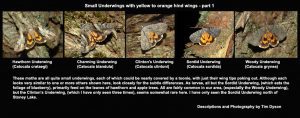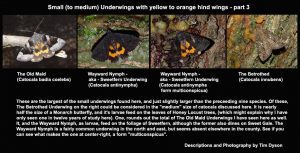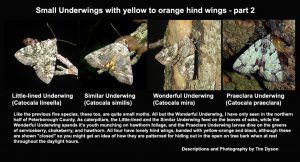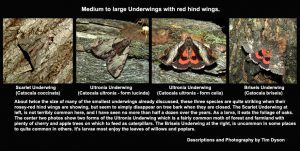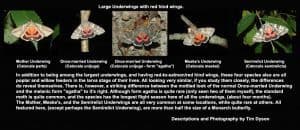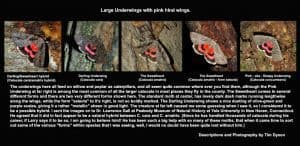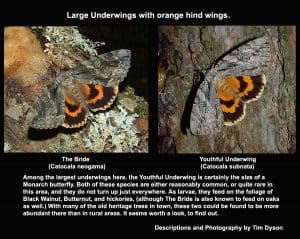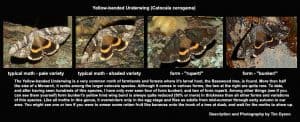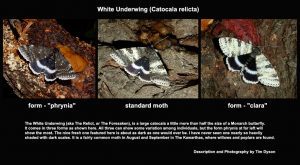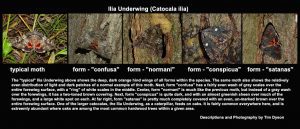I have spent some evenings this summer with some of my moth friends of the Noctuid group. Underwings, (genus – Catocala), are a fascinating bunch when one puts out bait repeatedly, night after night, to attract them. Some, like most nocturnal moths, will come to lights at night, but nothing will attract the underwings better than squished rotten bananas smeared onto the trunks of trees. The variety of underwing moths is outstanding, not just in terms of the number of species, but every now and then, you will encounter a different “form” within a species. A form, unless it shows only subtle differences outside the norm, will usually stand out due to having markings, colours, and/or patterns quite different from what one becomes used to seeing. Personally, I find the thrill of seeing a rare form just as great as seeing a new species for the first time!!
Where you bait will decide what species you are most likely to encounter. For instance, if you are baiting trees in farmland, you can expect to see many of the smaller species, who as larvae, have been feeding on the leaves of hawthorn, apple, and/or cherry. In addition, you will attract the large Yellow-banded Underwing, who in the larval stage, would have been eating the leaves of Basswood trees that are a common large tree along farm fence rows that divide one crop field from the next. If you live in the north and east of the county, you should expect species that, as larva, have been feeding on oak, blueberry, and Sweetfern (the latter being a woody shrub, and not a “fern” at all). If you happen to live in town, or in the south of the county, where there are plenty of walnut trees and/or hickories, then you will see the species who use those trees as larval hosts, and so on. I have tried baiting in all three of these described areas, and thus far, have encountered 27 of the 47 species listed as having ever been recorded within Ontario, (plus one natural hybrid).
Of the Ontario list, there are a couple of species that have only been recorded a handful of times, and of the remaining ones, about ten species that you would likely only ever encounter in s/w Ontario, west of the Niagara Escarpment in the Carolinian Zone. That shouldn’t discourage you, however, and as things continue to change, (many butterfly species are currently expanding ranges northward, so I suspect some moths are as well), now and in the near future seems a great time to find some new underwings in this area that might not have been recorded here before.
There are a few species that should be here, and reasonably common in Peterborough County, but I have just not seen them as yet. I would guess that the number of expected catocala species to be found here would be in the low thirties. Twenty-seven that I know of, and counting. Within those, I’ve recorded an additional fourteen “forms”.
I have made ten colour plates (see below) of species and forms to hopefully serve as a guide if/when you might like to try a little moth baiting yourself. Don’t be too surprised if you encounter an underwing that is not featured here; after all, I have not seen “all” of the species and forms that one could encounter in this area.
I would suggest that you only take photos, (and not the moths, themselves). Collecting is a common practice, and I try not to judge those who take part in it, I just do not collect them myself. I look at it that if you are not someone taking DNA samples to attempt to identify new species out of known species, then what is the point?
Photos will last a lifetime, and you will help to ensure a continued supply of new moths for future generations to experience, if you just leave them where you find them and move on to the next one.
Although the season is winding down now… Happy Mothing, anyway!! Tim Dyson, Stoney Lake
